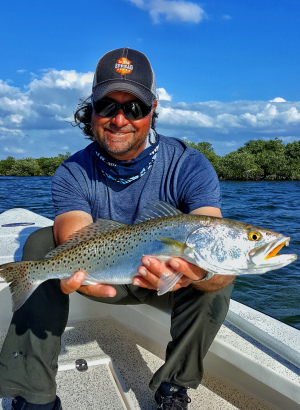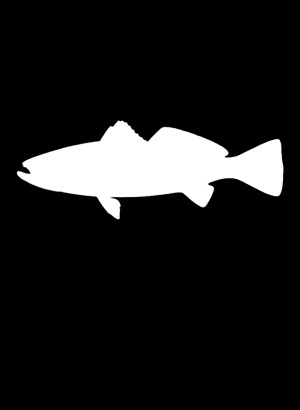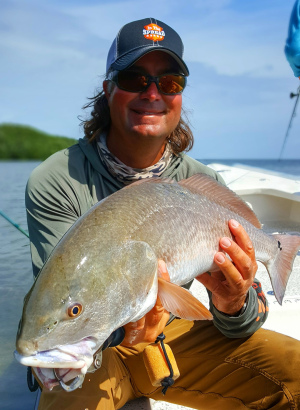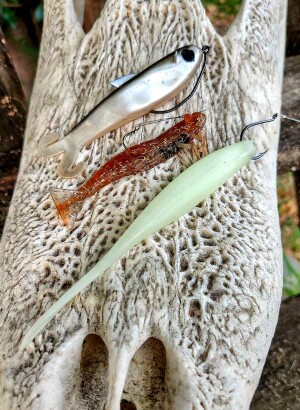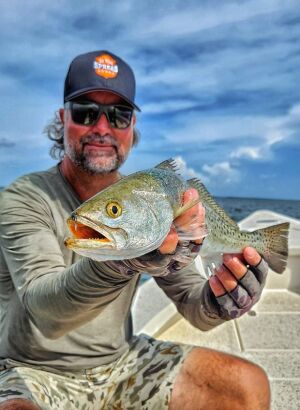For serious inshore anglers, few pursuits match the thrill of landing a trophy spotted seatrout. These elusive predators, often called "gator trout," represent the pinnacle of coastal fishing achievement. From the legendary waters of Florida to Texas's rich coastline, we'll show you how to consistently target and catch these magnificent gamefish.
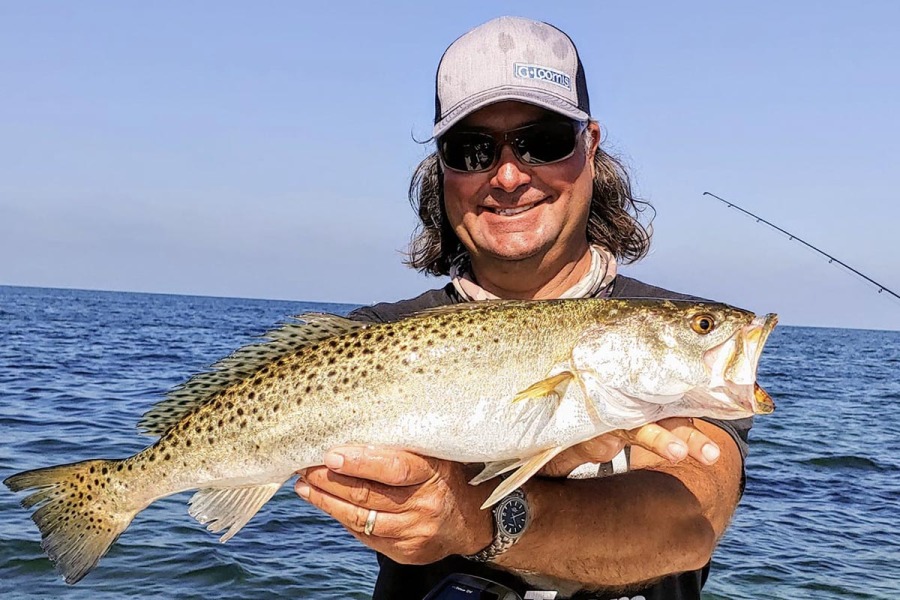
Featured
Trophy Spotted Seatrout: A Guide to Catching Gator Trout
Catching Trophy Spotted Seatrout
The pursuit of trophy spotted seatrout represents the pinnacle of inshore fishing along the southern United States coastline. These remarkable predators, often referred to as "gator trout" by seasoned anglers, have earned their prestigious status through a combination of size, elusiveness, and the considerable skill required to catch them consistently. Found in coastal waters from Maryland to Texas, with particular concentrations in Florida's diverse ecosystems, these fish have become the subject of both passionate pursuit and careful conservation efforts.
The classification of a trophy seatrout varies across different regions, but certain standards have emerged among serious anglers. In most areas, specimens exceeding 25-27 inches enter the trophy category, while Florida anglers often reserve the "gator" designation for fish surpassing 30 inches. These impressive specimens typically weigh more than 5 pounds, with exceptional catches reaching and exceeding 10 pounds. The current world record, a remarkable 17-pound, 7-ounce fish caught in Florida's waters, stands as testimony to the species' growth potential under ideal conditions.
The journey from average seatrout to trophy status reflects years of survival and optimal feeding conditions. These larger specimens are almost exclusively female fish, having survived long enough to reach their full growth potential. Their size represents not only longevity but also their crucial role in maintaining healthy populations, as larger females produce exponentially more eggs than their smaller counterparts.
The journey from average seatrout to trophy status reflects years of survival and optimal feeding conditions. These larger specimens are almost exclusively female fish, having survived long enough to reach their full growth potential. Their size represents not only longevity but also their crucial role in maintaining healthy populations, as larger females produce exponentially more eggs than their smaller counterparts.
Premier Trophy Trout Destinations
Florida's Atlantic Coast: The Epicenter of Trophy Trout
The Indian River Lagoon system stands as the undisputed capital of trophy seatrout fishing worldwide. This vast network of interconnected waterways, comprising the Indian River proper, Mosquito Lagoon, and Banana River, creates an ecosystem perfectly suited for producing trophy-class fish. The system's rich biodiversity, extensive seagrass beds, and mangrove-lined shorelines provide ideal conditions for seatrout to reach exceptional sizes.
The Indian River Lagoon's reputation isn't built on chance. The combination of several key factors creates this premier trophy trout habitat:
- Extensive seagrass beds providing cover and feeding grounds
- Protected waters allowing for consistent fishing conditions
- Abundant bait populations supporting growth to trophy sizes
- Varied bottom structure creating numerous ambush points
- Minimal development in certain areas maintaining habitat quality
Mosquito Lagoon, often called the "Redfish Capital of the World," quietly produces some of the largest seatrout in Florida. Its shallow, clear waters and vast grass flats create perfect conditions for sight-fishing opportunities, particularly during the early morning hours when large trout often feed in skinny water. The lagoon's remote sections, accessible only by shallow-draft vessels, provide sanctuary areas where trophy trout can grow with minimal fishing pressure.
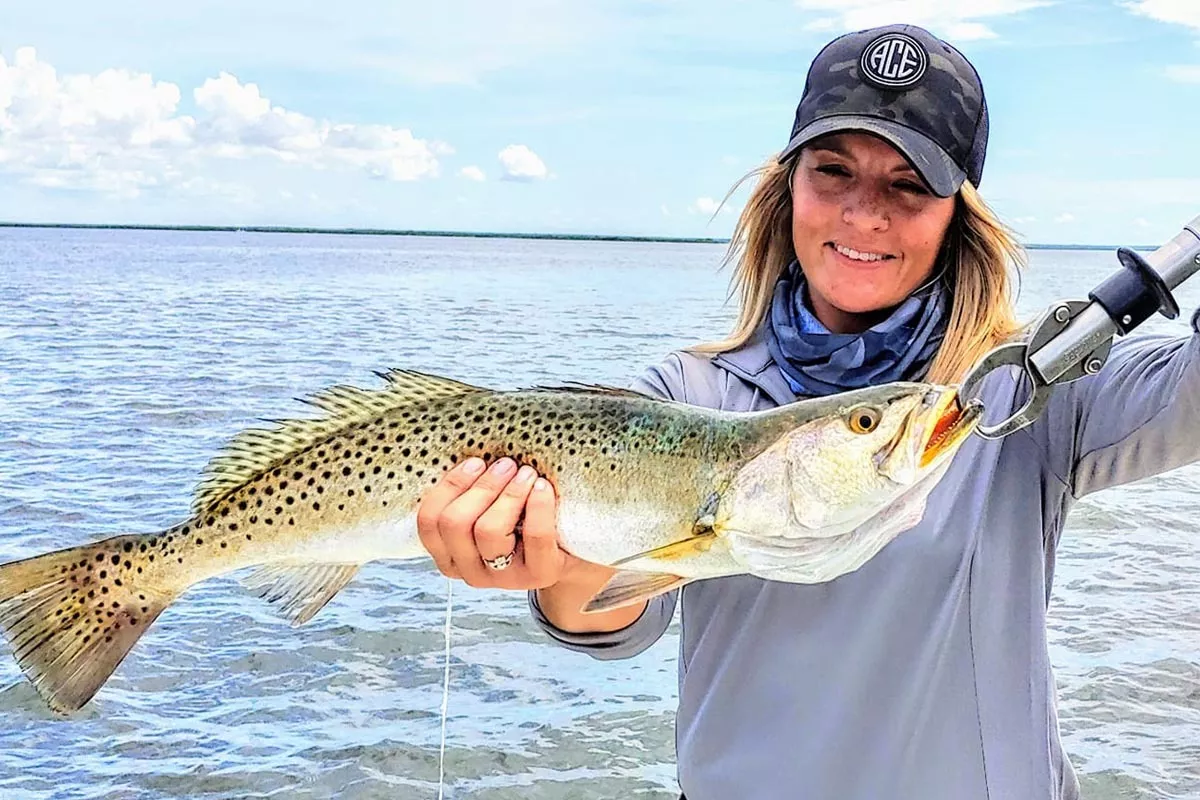
Florida's Gulf Coast: The Hidden Giant
While the Atlantic coast garners much attention, Florida's Gulf Coast quietly produces exceptional trophy trout opportunities. The St. Petersburg area, particularly around Pinellas Point and Fort de Soto, features extensive grass flats and structure that consistently hold large trout. These waters benefit from a perfect storm of conditions:
- Protected bays providing year-round fishing opportunities
- Extensive grass flat systems
- Strong tidal movements concentrating bait
- Numerous artificial structures supplementing natural habitat
The Fort Myers region presents another exceptional opportunity for trophy trout enthusiasts. The area's abundant mangroves and grass flats create an intricate network of productive fishing grounds. The connecting channels and rivers support a thriving seatrout population, making it a prime location for targeting larger specimens throughout the year.
The Everglades system, while less frequently mentioned for trophy trout, produces exceptional fish in its countless mangrove-lined bays and grass flats. The remote nature of many Everglades fishing spots means less pressure on the fish population, allowing more specimens to reach trophy size.
The seatrout fishery in Homosassa, Florida, is known for its abundance and quality, particularly when compared to other regions in Florida. Here are some key points of comparison:
Abundance and Size
- Homosassa: The area is recognized for its healthy populations of spotted seatrout, especially in the Homosassa, Crystal, and Chassahowitzka Rivers. Anglers often find a good mix of sizes, with many fish in the 12-20 inch range, and the potential for larger gator seatrout over 24 inches.
- Homosassa: The fishery benefits from shallow bays and grass flats that create ideal hunting grounds for seatrout. The water depth of 3-4 feet during summer makes it particularly productive. Additionally, the tidal influences help concentrate baitfish, enhancing feeding opportunities.
Captain William Toney of Homosassa Inshore Fishing has fished all over the State and the Gulf of Mexio. He is as dialed in as any guide in Florida, so check him out for the seatrout fishing experience of a lifetime.
Beyond Florida: Expansion of Trophy Territory
Texas has established itself as another premier destination for trophy seatrout fishing. The Galveston Bay system, with its mix of fresh and saltwater influences, provides diverse habitat supporting large trout populations. South Padre Island and the legendary Laguna Madre offer shallow, hypersaline waters that produce some of the state's largest specimens.

Seasonal Patterns and Environmental Influences
Spring: The Trophy Season
March marks the beginning of what many consider the premier trophy trout season. As water temperatures begin their gradual climb from winter lows, a biological switch seems to flip in these magnificent predators. The warming trend triggers several key behavioral changes that create optimal conditions for trophy hunting:
During this pre-spawn period, large female trout become notably more active, moving into shallower waters to feed aggressively. This increased activity serves a crucial biological purpose - these fish are preparing for the energy-demanding spawning season ahead. The combination of warming waters and the biological imperative to feed makes spring, particularly March through May, one of the most productive periods for targeting trophy specimens.
Fall: The Second Peak
October emerges as another prime period in the trophy trout calendar, characterized by what anglers often call the "fall feed." As water temperatures begin their autumn decline, trophy seatrout enter a period of intensified feeding activity. This behavioral shift coincides with major bait migrations, particularly the mullet run, creating a perfect storm of opportunity for anglers seeking trophy fish.
Environmental Factors and Fish Behavior
Temperature: The Critical Factor
Water temperature serves as the primary driver of trophy seatrout behavior and location. These fish exhibit clear preferences and behavioral patterns based on water temperature ranges:
- Peak feeding activity
- Most aggressive striking behavior
- Widespread distribution across habitats
- Increased metabolism and movement
- Reduced feeding frequency
- Movement to deeper waters
- Preference for slower-moving baits
- Concentration in thermal refuges
- Feeding shifts to early morning and late evening
- Movement to deeper, cooler waters
- Reduced overall activity
- Increased sensitivity to dissolved oxygen levels
Tidal Influences and Movement Patterns
Tidal movement plays a crucial role in trophy trout behavior and feeding patterns. These fish have evolved to take maximum advantage of tidal fluctuations, with specific behaviors tied to different stages of the tide:
- Fish move toward shallow flats and shorelines
- Increased feeding activity as water floods structure
- Prime time for working points and creek mouths
- Enhanced opportunity around the first few hours of the flood
Outgoing Tide:
- Trophy trout position near channel edges and dropoffs
- Feeding activity focuses on bait being swept out of shallows
- Productive period for deeper grass edges
- Concentrated feeding at creek mouths and points
The most productive periods typically occur during the first few hours of both incoming and outgoing tides. During these periods, water movement is moderate enough for trophy trout to maintain position while actively feeding, yet strong enough to concentrate and disorient bait.

Moon Phase Impact
The influence of moon phases on trophy trout fishing extends beyond merely affecting tides. Both new and full moons can trigger enhanced feeding activity, particularly during the five days leading up to and following these lunar events. During full moons, increased natural light can extend feeding periods into nighttime hours, especially around lighted docks and bridges where bait concentrates.
Light Conditions and Feeding Windows
Trophy seatrout exhibit distinct preferences for feeding during specific light conditions:
- Prime feeding period starting before sunrise
- Aggressive surface feeding activity
- Movement into shallow water
- Optimal topwater opportunities
Late Evening:
- Increased activity as light levels decline
- Movement toward shallow feeding areas
- Enhanced feeding around bait concentrations
- Effective period for various presentations
Night Fishing:
- Concentrated activity around lighted structures
- Increased shallow water feeding
- Reduced fishing pressure
- Enhanced stealth advantage
Advanced Tactics and Techniques
Understanding Trophy Trout Behavior
Trophy seatrout exhibit markedly different behavioral patterns compared to their smaller counterparts. These differences fundamentally influence how anglers should approach them. Unlike smaller trout that often school and feed frequently throughout the day, trophy specimens tend to be solitary predators that feed less often but more selectively.
This selective feeding behavior means they typically consume one large meal per day rather than multiple smaller meals, making the timing and presentation of your offering crucial to success.
Structure Fishing and Ambush Points
Trophy seatrout are masters at utilizing structure to their advantage, and understanding how they relate to different types of structure is crucial for consistent success. These fish frequently position themselves near specific types of structure that provide both cover and feeding opportunities:
Seagrass Beds and Potholes: The relationship between trophy trout and seagrass beds is particularly complex. While smaller trout might patrol extensive grass flats, trophy specimens often focus on specific features within these areas. Sandy potholes within seagrass beds serve as prime ambush points, allowing these large predators to remain hidden while monitoring the surrounding area for potential prey. The edges of these potholes, particularly during moving tides, create natural feeding stations where bait becomes more vulnerable to attack.
Oyster Bars and Hard Structure: Oyster bars prove exceptionally productive, especially during tidal movements. These structures create current breaks and eddies where bait congregates, providing trophy trout with excellent ambush opportunities. The irregular bottom contours and sharp edges associated with oyster bars offer multiple points where large trout can position themselves to intercept passing prey.

Lure Selection and Presentation
The art of presenting baits to trophy seatrout requires a refined approach that matches both the conditions and the fish's feeding preferences. Successful anglers typically employ larger baits that mimic the preferred forage of trophy trout:
- Heddon Saltwater Super Spook: The classic walk-the-dog action triggers aggressive strikes
- MirrOlure Top Dog: Especially effective during low light conditions
- Excalibur Super Spook: Creates the perfect combination of sound and action
These surface lures prove most effective during low light conditions, particularly during early morning or late evening hours. The key to success lies in the cadence of the retrieve – a slower, deliberate walk-the-dog action often produces better results than a faster, more aggressive presentation.
Soft Plastic Jerkbaits:
- 5- to 6-inch profiles in natural colors
- Bass Assassin Shad Assassin: Excellent for mimicking wounded baitfish
- Lunker City Slug-Go: Versatile with multiple rigging options
- D.O.A. CAL Paddle Tail: Effective when a more subtle presentation is needed
When working soft plastics, slow-rolling techniques often prove most effective. The goal is to mimic an injured or struggling baitfish, which triggers the predatory instincts of larger trout.
Suspending Twitch Baits:
- MirrOlure MirrOdine: Perfect for working deeper grass edges
- Paul Brown's Soft-Dine: Excellent in cooler water conditions
- DOA Shrimp: Particularly effective when rigged under a popping cork
These lures excel in situations where a more subtle presentation is required, particularly during cooler months or when fish are holding in slightly deeper water.
Live Bait Techniques
While artificial lures account for many trophy trout catches, live bait presents an equally effective option when properly presented:
Large Live Baits:
- Mullet (4-6 inches): Primary forage for trophy trout
- Pinfish: Especially effective around structure
- Live Shrimp: Universal bait that produces year-round
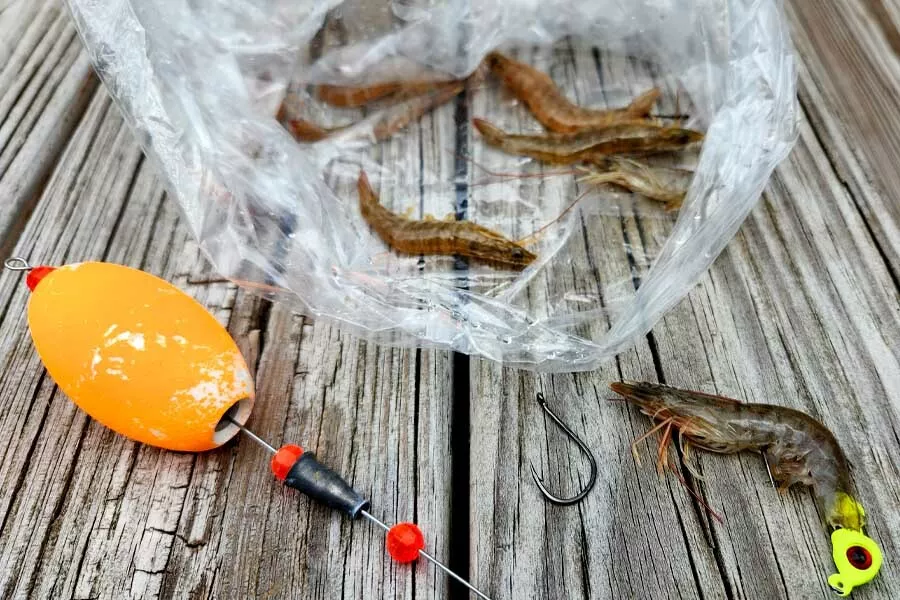
Advanced Presentation Techniques
Trophy trout require a more nuanced approach to presentation than their smaller counterparts:
The Long Cast Approach: Distance casting becomes crucial when targeting trophy trout. These fish have survived long enough to develop acute awareness of their surroundings and will often spook at the slightest disturbance. Making long casts helps maintain the stealth necessary to fool these wary predators.
Speed and Cadence: The retrieve speed and cadence should match both the conditions and the fish's activity level:
- Cold Water: Slower, more deliberate presentations
- Warm Water: More aggressive retrieves, particularly during active feeding periods
- Transitional Periods: Mixed speeds with frequent pauses
Specialized Seasonal Approaches
Spring Tactics (March-May)
The spring season represents prime time for trophy trout fishing, requiring specific tactical approaches to maximize success. As water temperatures climb into the optimal range of 68-78°F, trophy trout become more active and move into shallower waters to feed. This period demands particular attention to both timing and technique:
Early Morning Strategies: During spring mornings, focus on shallow grass flats where warming water draws both bait and predators. The first few hours of daylight often produce the most aggressive strikes, particularly on topwater plugs worked slowly across these areas. Trophy trout move into these shallows to feed, taking advantage of the low light conditions and increased bait activity.
Fall Tactics (September-November)
The fall feeding period, particularly October, provides another prime opportunity for trophy trout. This season coincides with major bait migrations and requires specific approaches:
Water Temperature Transitions: As temperatures begin to cool, trophy trout often increase their feeding activity. Pay particular attention to areas where deeper water meets shallow flats, as these transition zones allow large trout to move between warm shallow water and cooler depths as conditions change throughout the day.
Advanced Structure Fishing
Reading and Working Structure
Successfully targeting trophy trout requires a thorough understanding of how these fish relate to different types of structure throughout the day and across tidal stages:
Grass Flat Dynamics: When fishing grass flats, focus on specific high-percentage areas:
- Potholes: Natural sandy depressions in grass flats serve as prime ambush points
- Grass Edges: The transition between thick and sparse grass often holds larger fish
- Depression Lines: Subtle depth changes in grass flats concentrate both bait and predators
Mangrove Strategies: Working mangrove shorelines effectively requires attention to several key factors:
- Water Depth: Focus on sections with at least 2-3 feet of water, even at low tide
- Root Systems: Points and cuts in the mangrove line create natural ambush points
- Current Flow: Areas where tide creates current breaks along mangrove edges
Hard Bottom: Cast your lures parallel to the structure rather than directly at it:
- Cover and Concealment: Rocky bottoms provide excellent cover for seatrout, allowing them to hide while waiting to ambush prey
- Tide and Current Influence: Seatrout are sensitive to water movement, and rocky bottoms can create areas of current where bait is funneled.
- Bait Concentration: Rocky areas attract various baitfish and crustaceans, making them hotspots for seatrout.
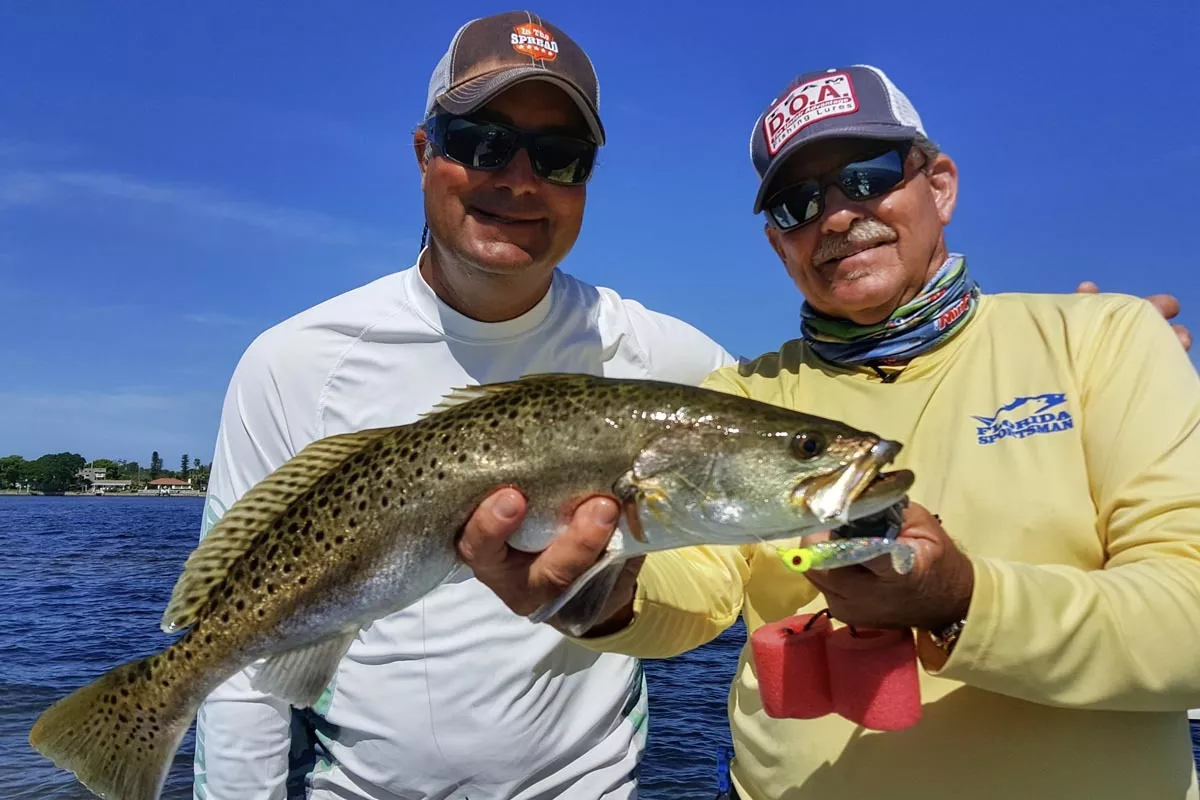
Tide and Moon Phase Tactics
Understanding how tides and moon phases affect trophy trout behavior is crucial for consistent success:
Tide Stage Approaches:
- Incoming Tide: Work from deeper water toward flooding shorelines and flats
- Outgoing Tide: Focus on channels and cuts where water funnels off flats
- Slack Tide: Target deeper holes and channels where fish wait out slack periods
Moon Phase Influence: Strong moon phases (new and full) create more extreme tidal movements, concentrating bait and creating enhanced feeding opportunities. During these periods, pay particular attention to:
- Current Lines: Areas where moving water creates distinct edges
- Bait Concentration Points: Locations where current pushes bait into confined areas
- Temperature Breaks: Zones where different water masses meet
Conservation Practices
Proper Handling Techniques
The preservation of trophy seatrout populations requires careful handling practices:
Landing Methods:
- Use proper tackle strength to minimize fight time
- Avoid lifting large trout vertically; support their weight horizontally, if you intend to release the fish
- Keep fish in the water as much as possible during the release process
- Use rubber nets or bare hands to minimize damage to the fish's protective slime coat
Photography Guidelines:
- Prepare camera settings before handling fish
- Minimize air exposure to 30 seconds or less
- Support large trout horizontally with both hands
- Avoid placing fish on dry surfaces or boat decks
Release Practices
Proper release techniques significantly increase survival rates:
Recovery Process:
- Hold fish gently in the water facing into the current
- Support until they maintain upright position independently
- Allow fish to swim away under their own power
- Avoid releasing in areas with heavy predator activity
Advanced Tips for Success
Pattern Development
Successful trophy trout fishing often relies on pattern recognition:
- Track water temperatures across seasons
- Monitor bait movement patterns
- Note productive tide stages at specific locations
Feeding Patterns:
- Document successful time periods and locations
- Record productive lure and color combinations
- Note weather conditions during successful trips
Stealth Approaches
Trophy trout have survived long enough to become wary of danger:
- Use wind and current to maintain position
- Stay well back from target areas
- Minimize noise and sudden movements
- Consider wade fishing in shallow areas
Tackle Considerations:
- Use long casts to maintain distance
- Select quiet lures for spooky fish
- Consider lighter line in clear water
- Match leader strength to conditions
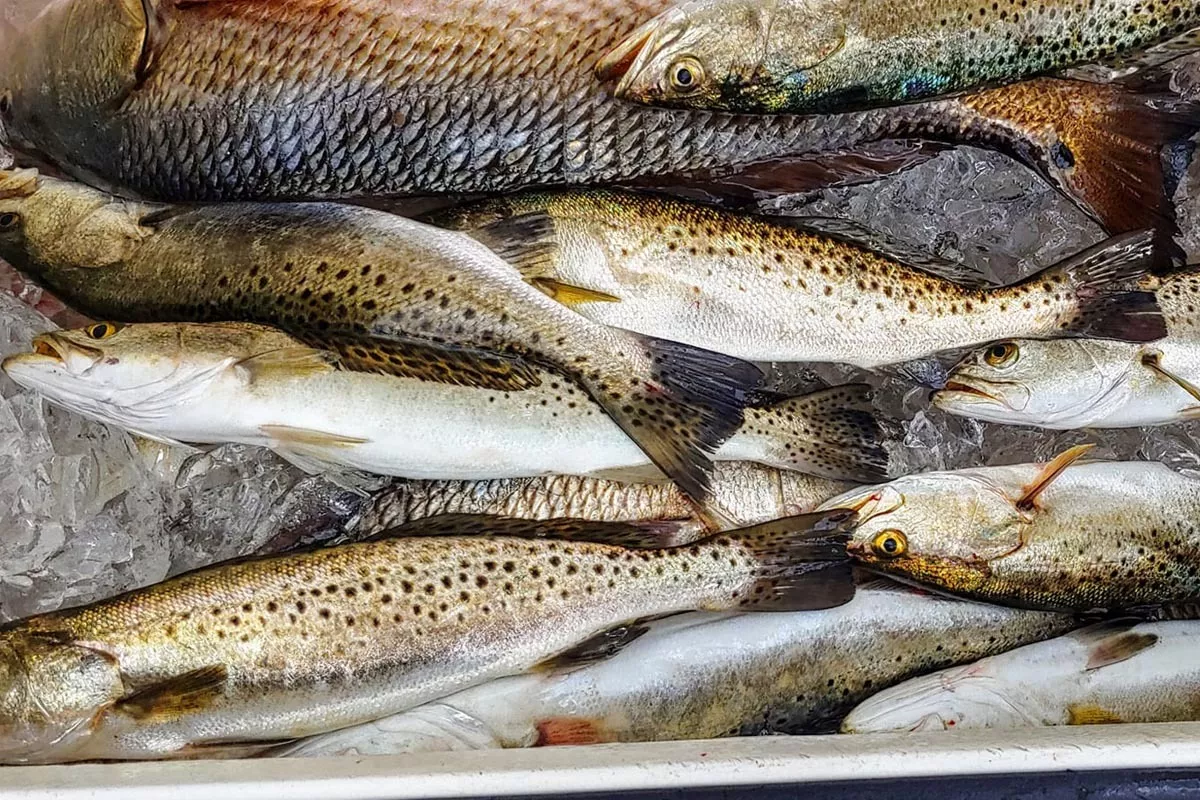
Be a Smarter Seatrour Fisherman
The pursuit of trophy seatrout represents both a challenge and an opportunity to connect with one of our most prestigious inshore gamefish. Success requires not only technical skill and knowledge but also patience and respect for these remarkable predators. By understanding their behavior, habitat preferences, and seasonal patterns - while practicing conservation-minded fishing techniques - anglers can enjoy the thrill of pursuing trophy seatrout while ensuring their preservation for future generations.
Login
to leave a review.
User Reviews

Robert
10.23.2024
0

Benjamin
10.23.2024
0
Complete Dredge Pulley Setup Guide
Saltwater
12.28.2020
High Speed Wahoo Trolling Rig
Saltwater
09.07.2018
Best Bait for Wahoo
Saltwater
12.30.2023
Pinfish - A Comprehensive Guide
Saltwater
11.10.2023
0



